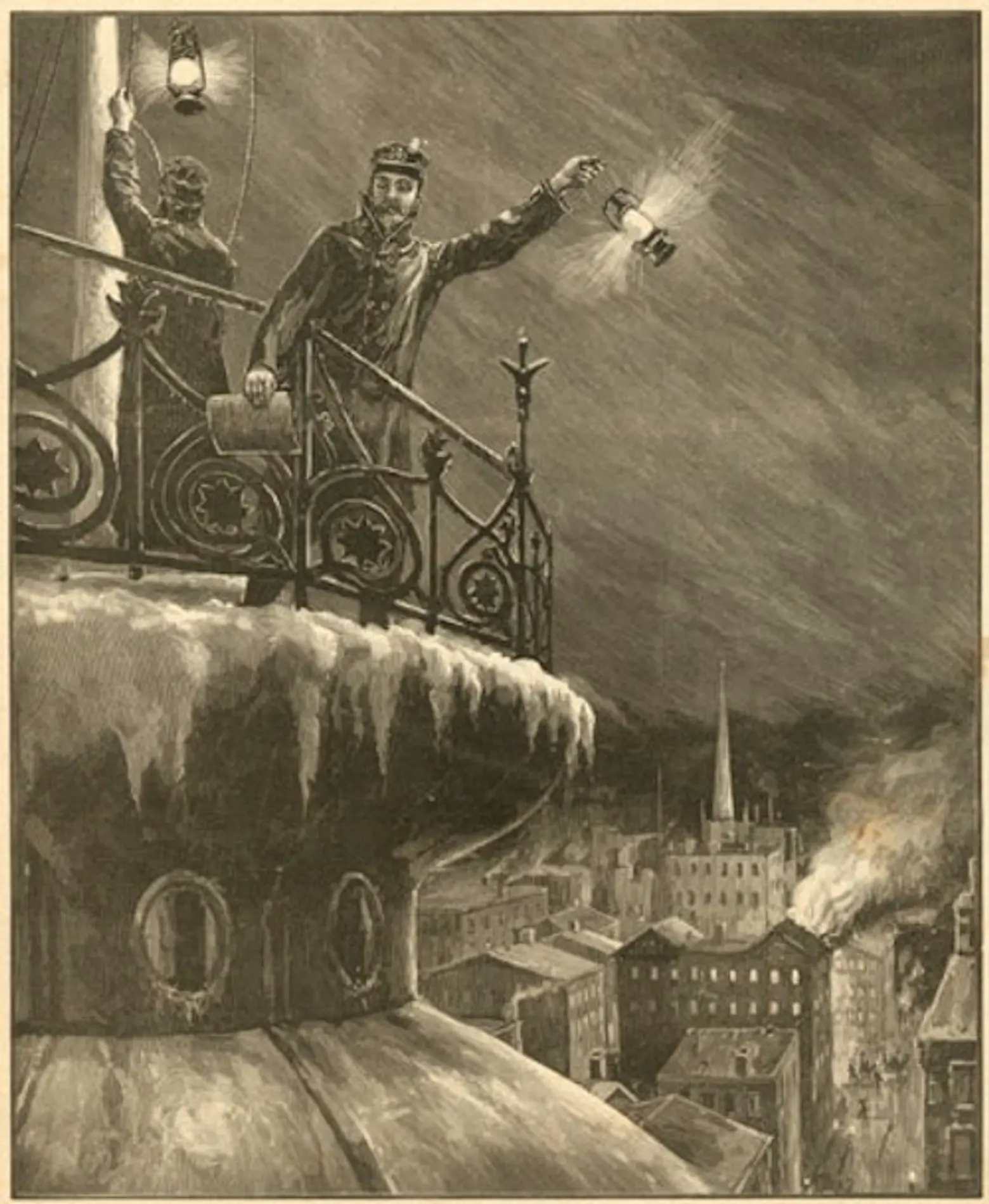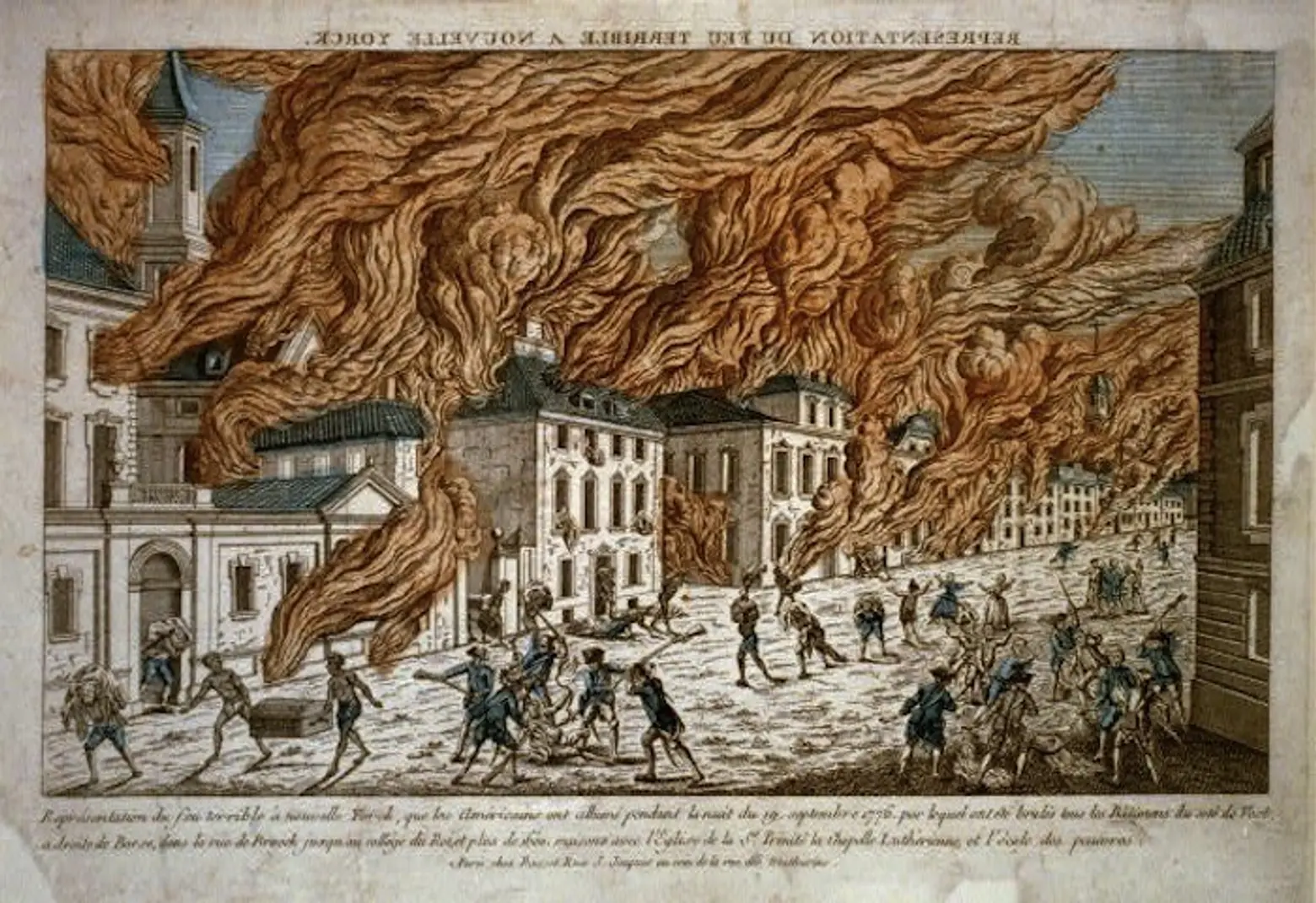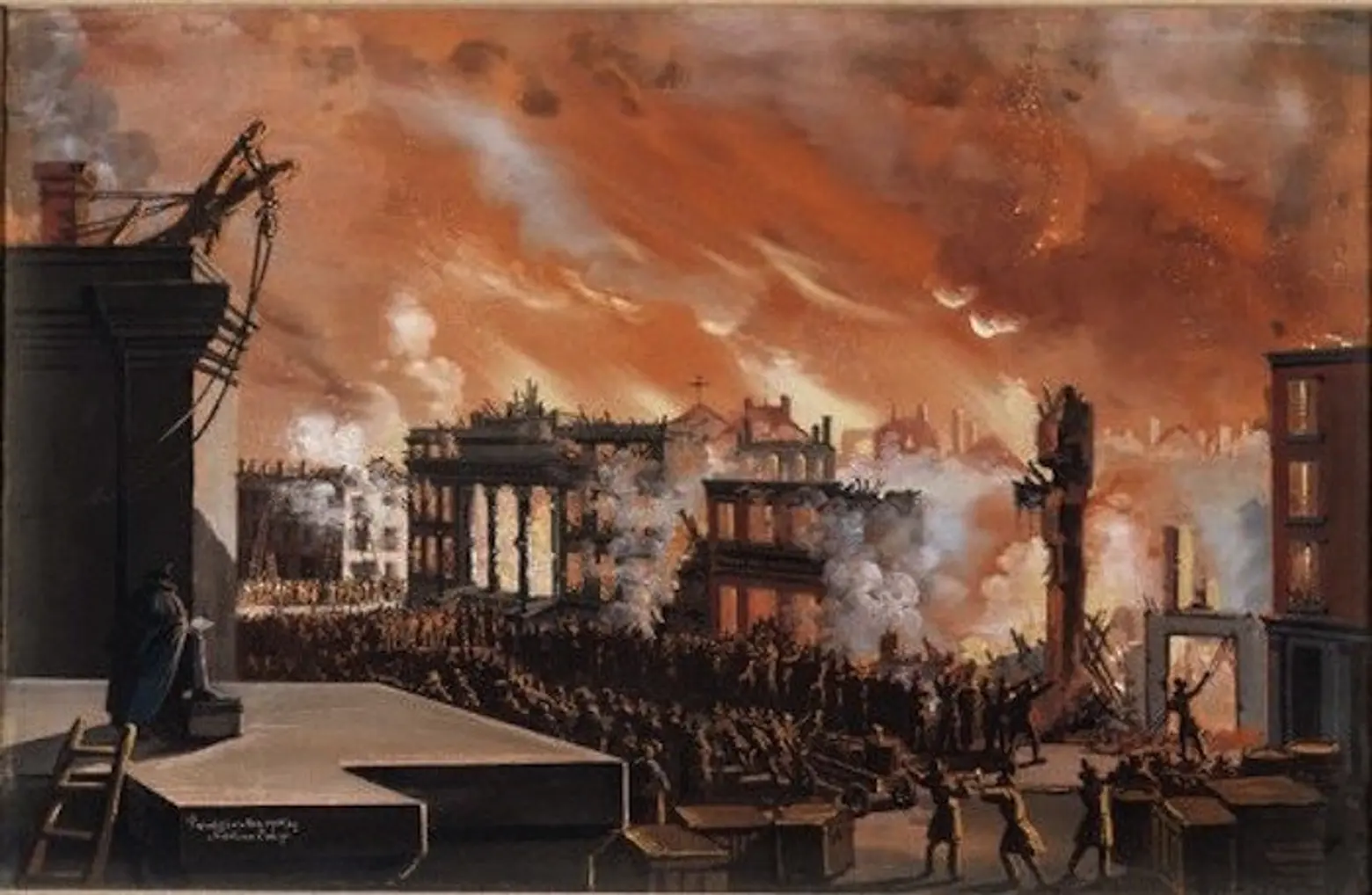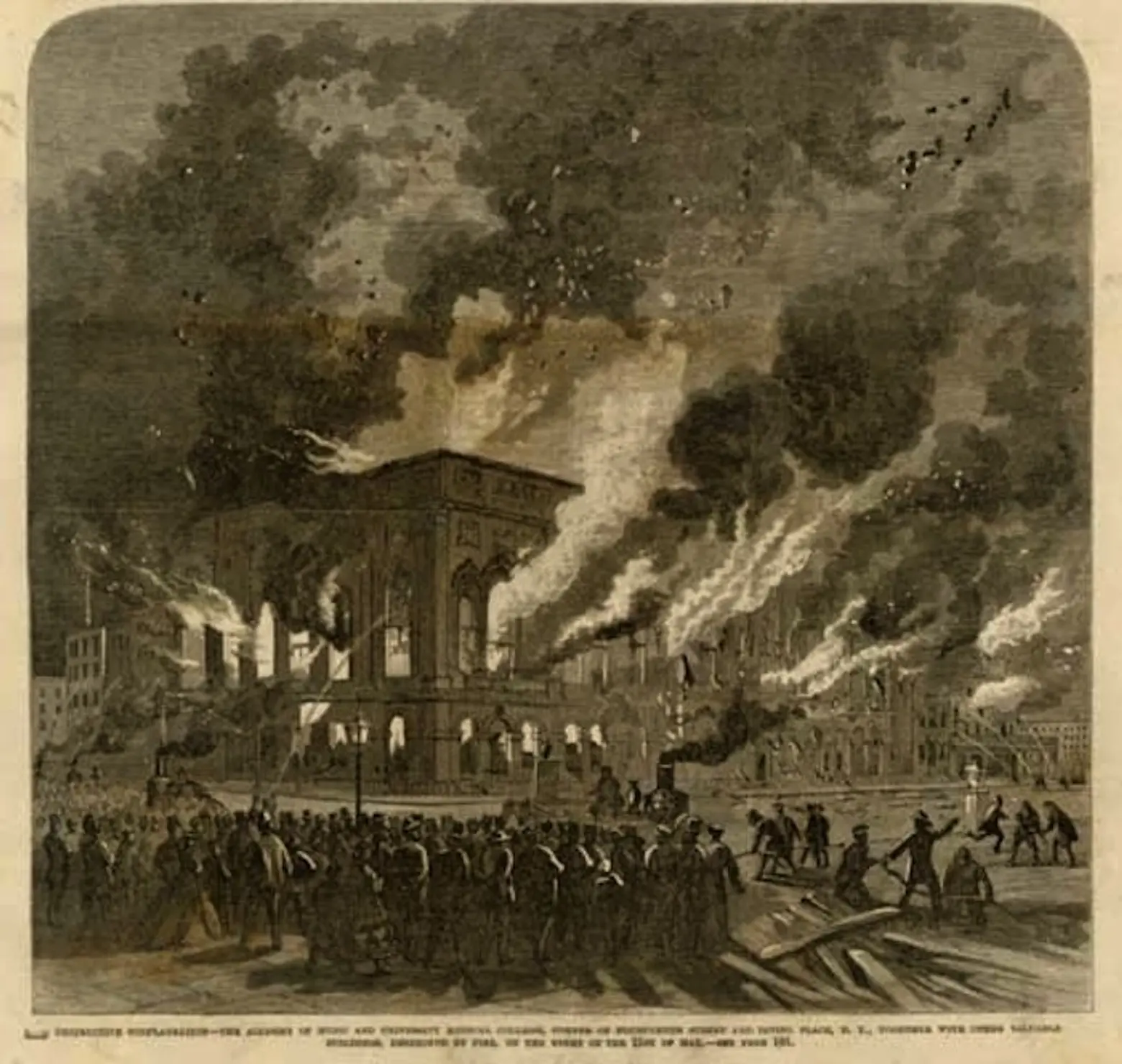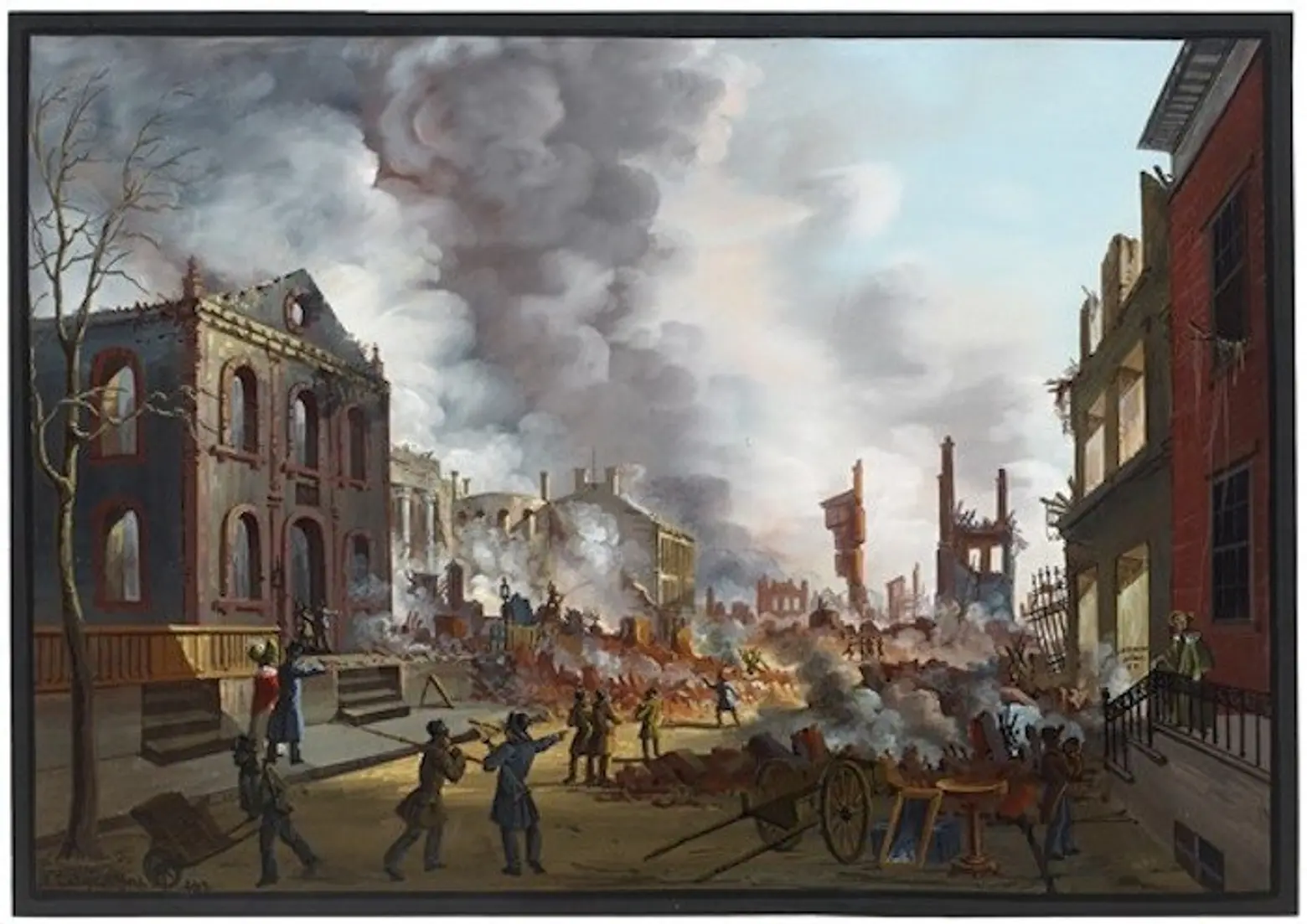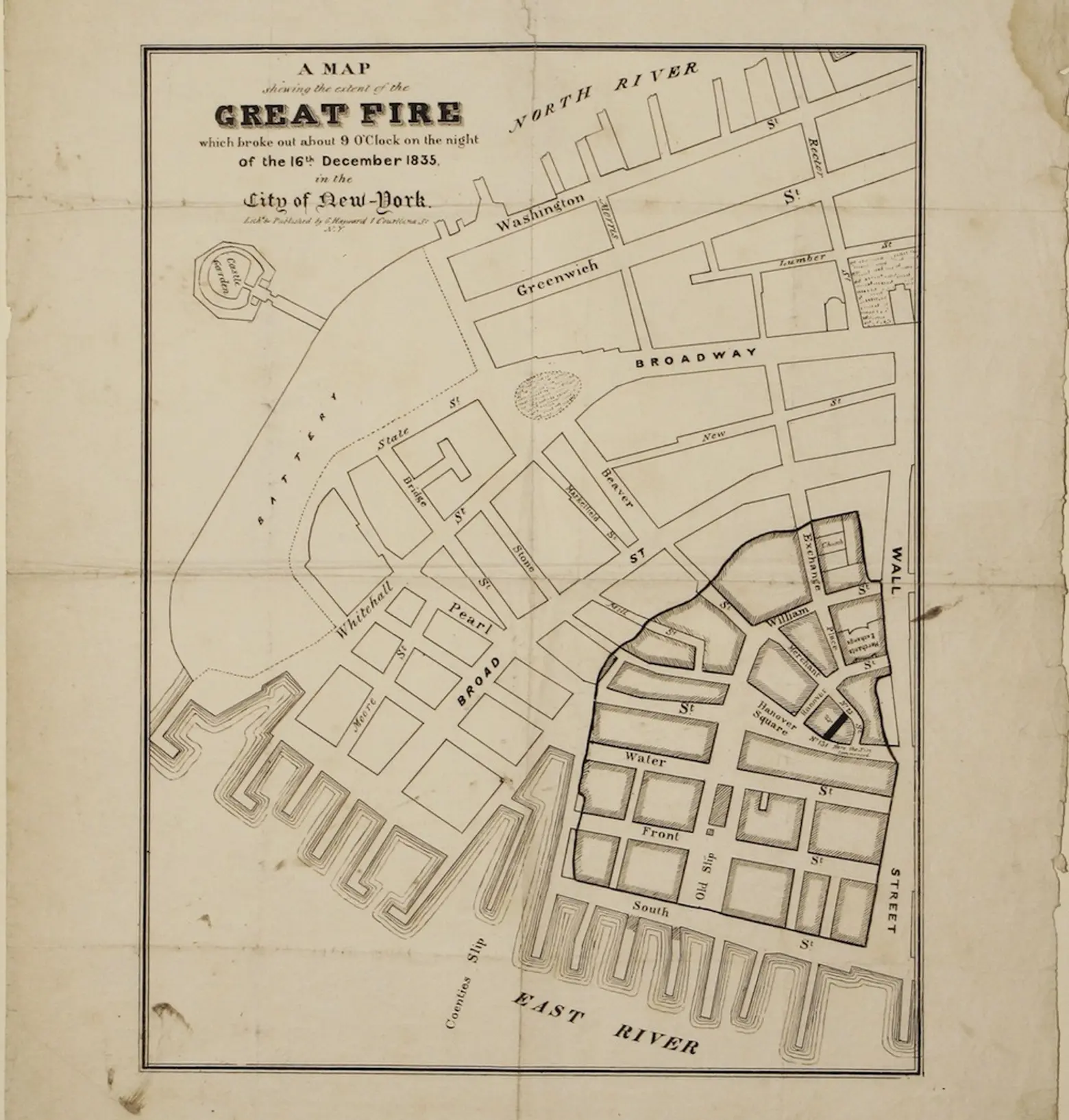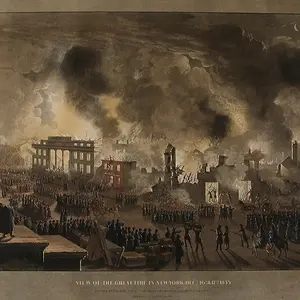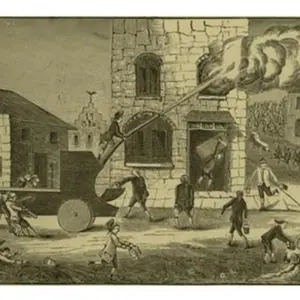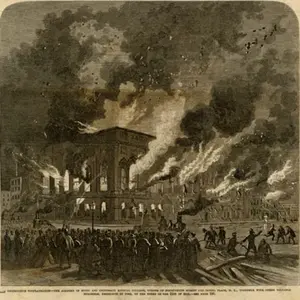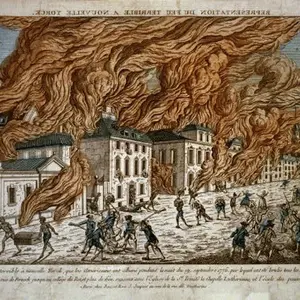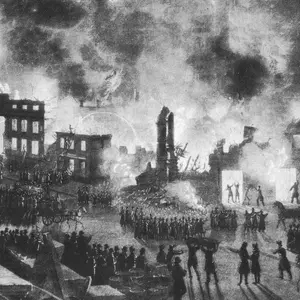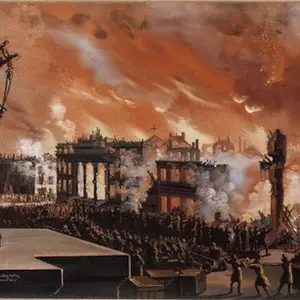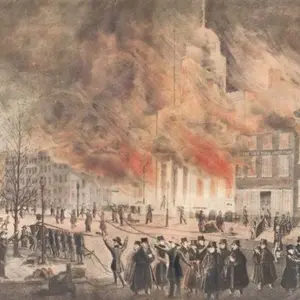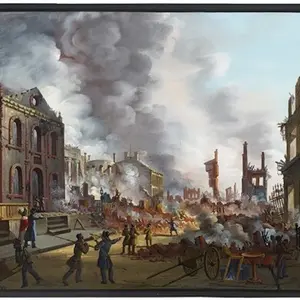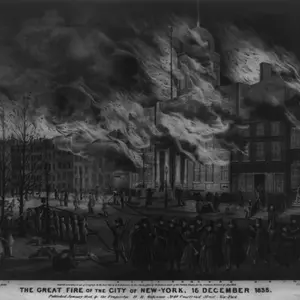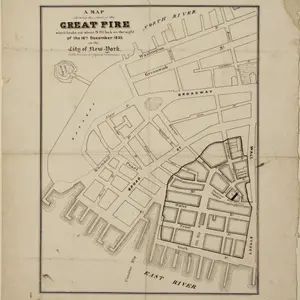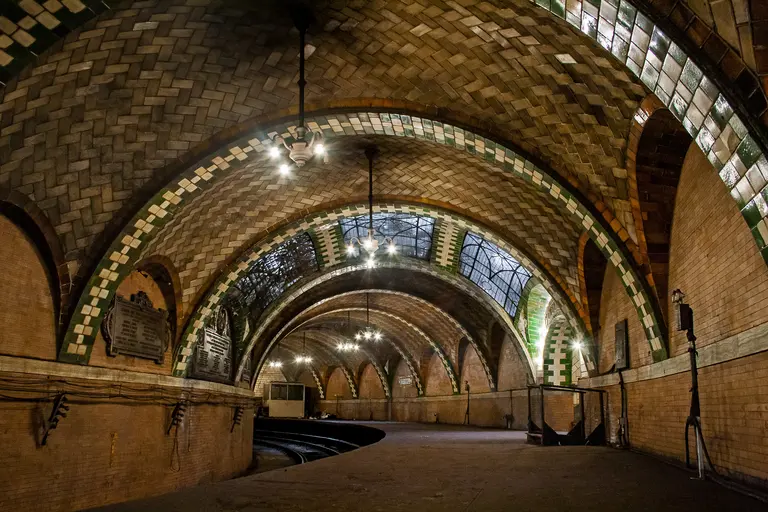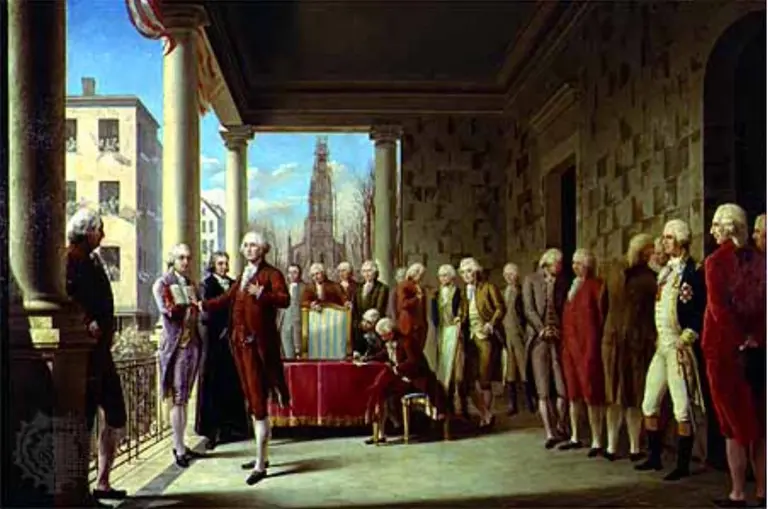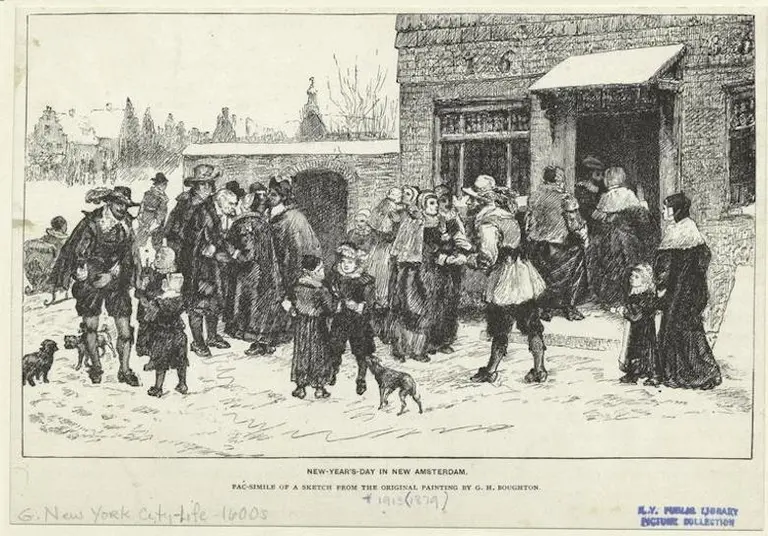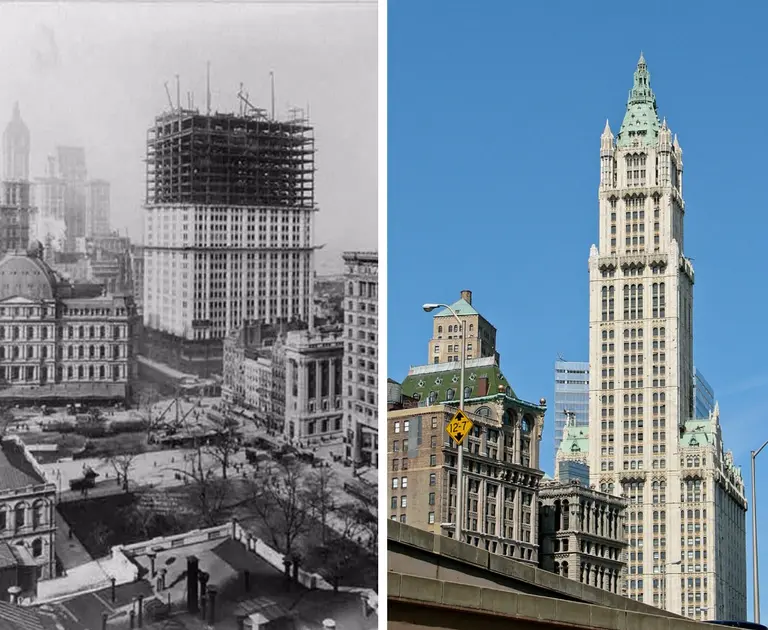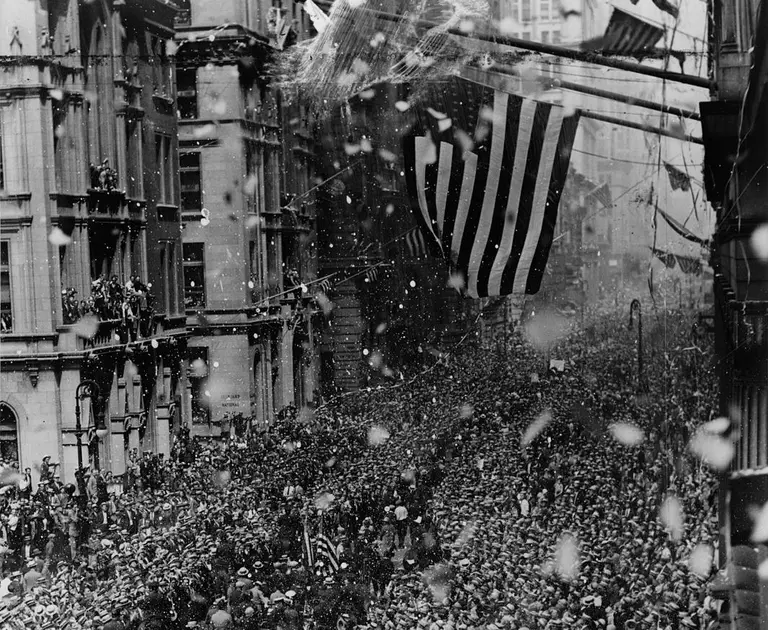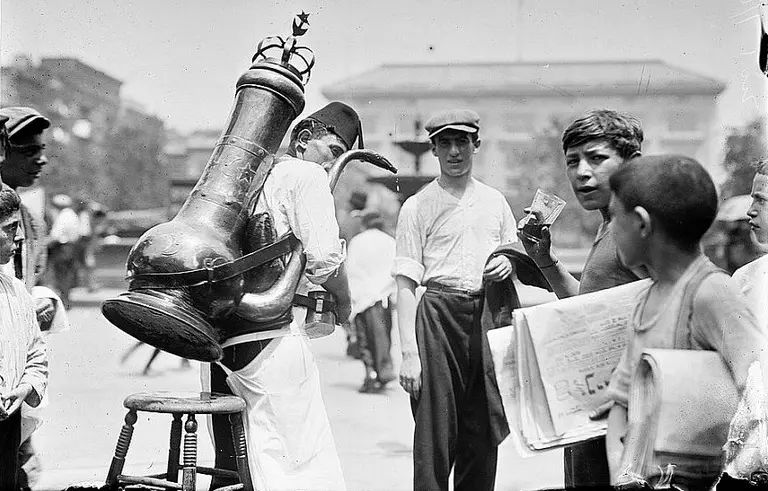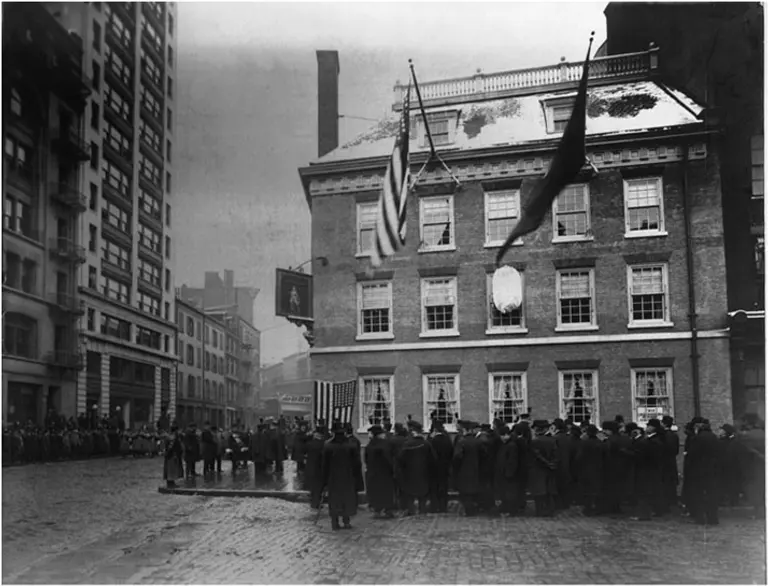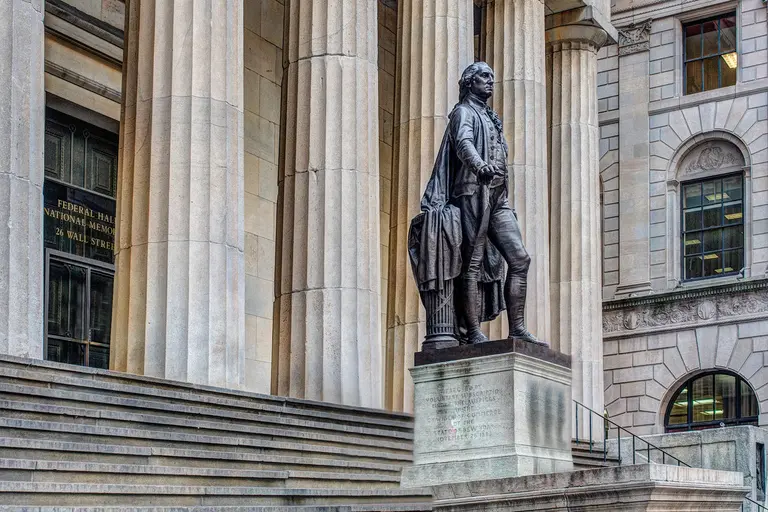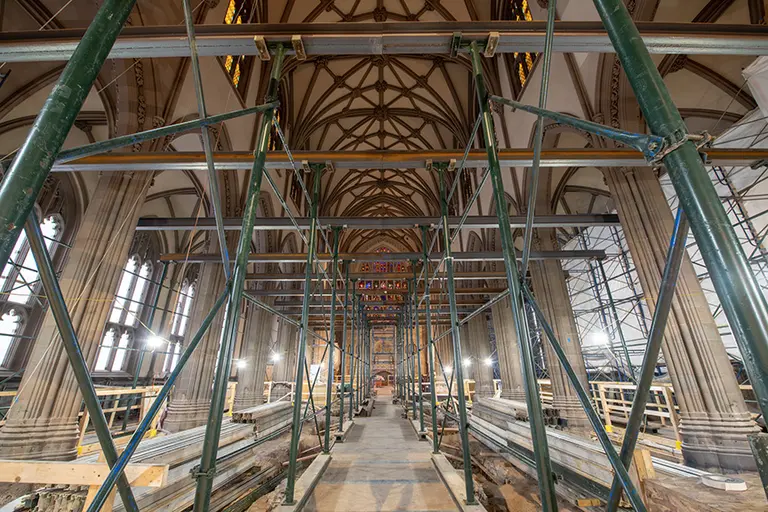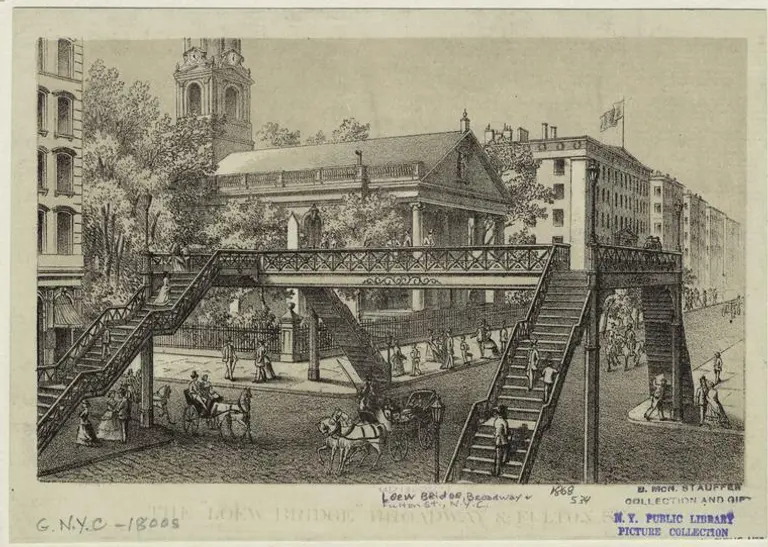A horrifying blaze swept through Lower Manhattan 181 years ago today

It’s hard to envision blocks and blocks of Lower Manhattan being destroyed by a raging fire, but that’s exactly what happened there 181 years ago to the day, December 16th, 1835. That year marks one of New York’s most traumatic fires in history, known as the Great Fire of 1835. It came at a time the city was developing rapidly, with the arrival of new businesses, railroad terminals, and people. But there were also major concerns that came with the city’s boom: there was a lack of a reliable water source for the city, and there were not enough fire departments to keep everyone safe. And so the forces collided into a traumatic fire that would change the course of New York’s development significantly.
On the evening of that fateful December 16th, the temperature was falling rapidly and high winds were blowing across downtown Manhattan. A nightwatchman of the Financial District, William Hayes, smelled smoke and traced it to the intersection of Exchange and Pearl Streets, where a large warehouse was engulfed in flames. He called for backup but the fire quickly spread to the many nearby commercial buildings.
According to the New York Herald, by 10pm—only one hour since the fire was first spotted—about forty of the city’s richest dry goods stores were completely destroyed, with The Herald estimating damages in the millions.
The fire continued to tear through Lower Manhattan. The frigid temperatures acted against the firemen, with winds stoking the flames and fire hydrants freezing over. Although the Fire Chief sent numerous engine companies to the East River for water, the river was covered with thick ice, and any water they managed to retrieve froze in the hose. The fireman were forced to pour brandy on the engines and into their boots to melt the rapidly-forming ice.
Illustrations from this time show complete chaos—merchants, who were desperately trying to save their stock, tossed goods out of buildings onto the streets. Papers were swirling everywhere, and embers spread all the way to Brooklyn, setting a few rooftops on fire there.
Volunteer firemen came from Brooklyn and Philadelphia to assist, while marines and sailors from the Brooklyn Navy Yard were deployed for crowd control. By 12:30 am, the fire had progressed towards Wall Street and the Merchant’s Exchange building, which was made of marble and considered fire proof. Merchants, however, did not want to take any chances and tried to save any merchandise they could. By 2am, the building was engulfed in flames and the entire financial and commercial district was completely overcome.
As this point of the night, the fire had destroyed numerous buildings. The streets were littered with abandoned fire equipment, and looters scavenged for goods. Sometime between 2am and 3am, the mayor decided to try demolishing private buildings in the effort to halt the fire. Officials chose a grocery store at 48 Exchange Place, near the intersection of Exchange and Broad Street, hoping that by destroying it they might prevent the fire from moving toward the residential neighborhoods near the Financial District.
By 5am the grocery store was exploded with powder kegs, and it set the next door building at 50 Exchange Place on fire. By the end of the night, several more buildings had been intentionally set ablaze, which would ultimately deprive the fire of its fuel.
On the morning of December 17th it was clear the scale of destruction: 17 blocks obliterated, nearly 700 buildings destroyed, and $20 million worth of damage. Amazingly, only two people died, but there were thousands out of work and four hundred arrested for looting.
The city sought help from the federal government to rebuild, and it provided an opportunity to alter the street grid, an improvement from the haphazard streets there before. Plans were also made to quickly rebuild the Merchant’s Exchange.
Outcry from New Yorkers helped spur the construction of the Croton Aqueduct, which insured a steady, safe and quick supply of water for the city and fire fighters. After five years of construction, the Aqueduct was completed in 1842. This reliable water supply was coupled with more state-of-the-art equipment for firefighters. The city also began to professionalize the fire department to meet the needs of the population.
Although the rebuilding effort was swift, a variety of fire memorials, statues, plaques, commemorative plates and etchings found their way into numerous city museums and parks. And 181 years later, it remains a harrowing tale of the old Financial District’s destruction.
[The Great Fire of 1835 via Virtual New York CUNY]
RELATED:
- Historic map shows the manufacturing industries of 1919 NYC
- Before Repeal Day ended Prohibition in 1933: Speakeasies and medicinal whiskey were all the rage
- VIDEO: Watch the Frenzy of New York Holiday Shoppers in 1930
